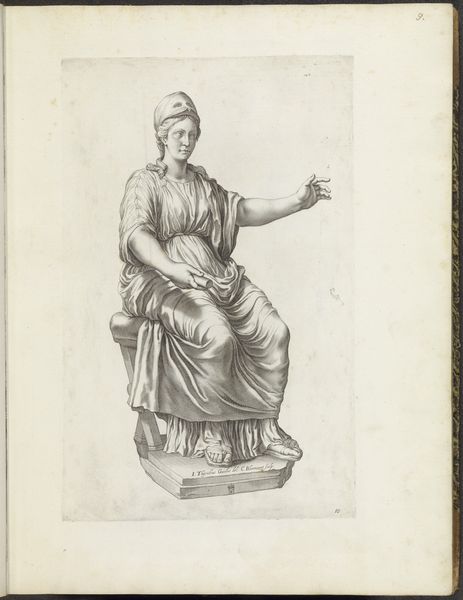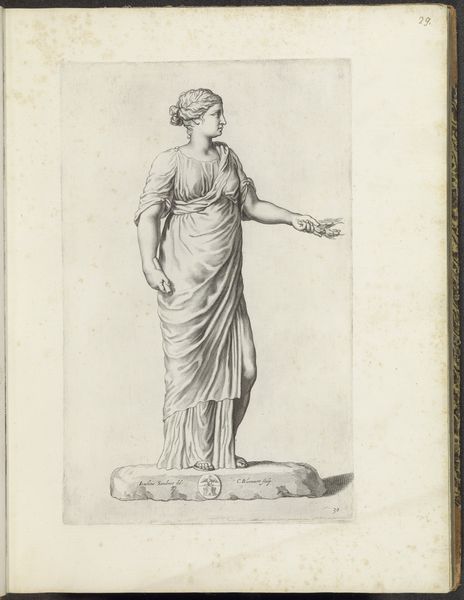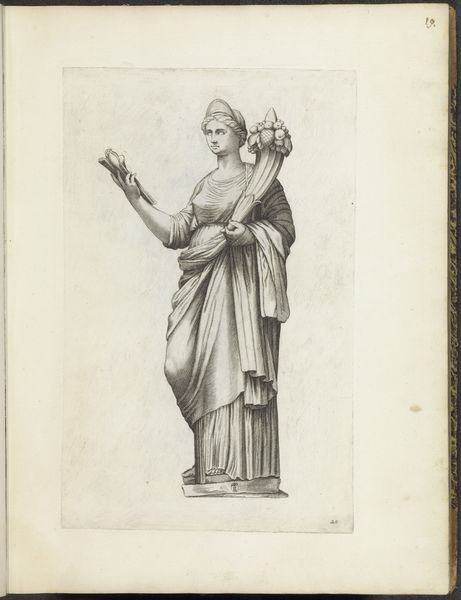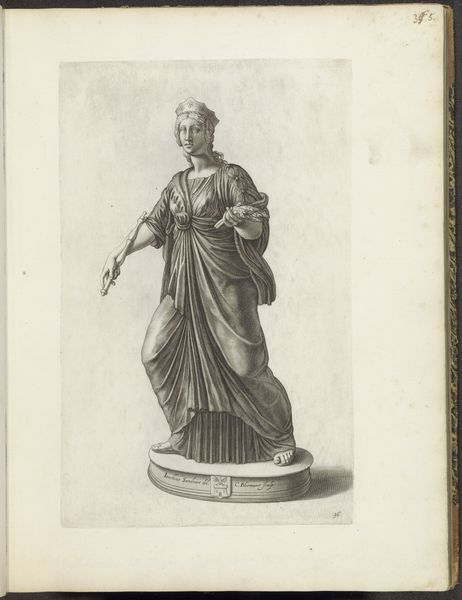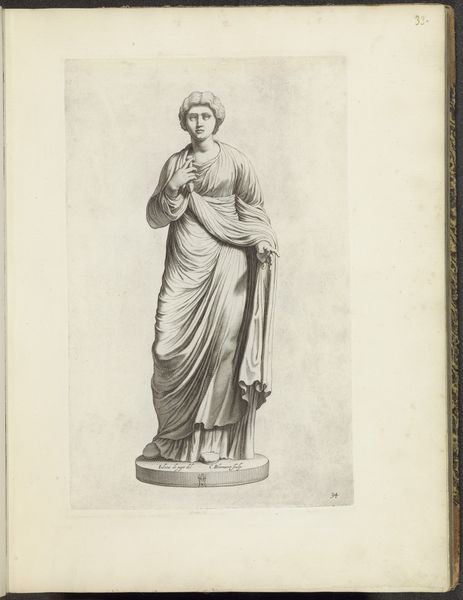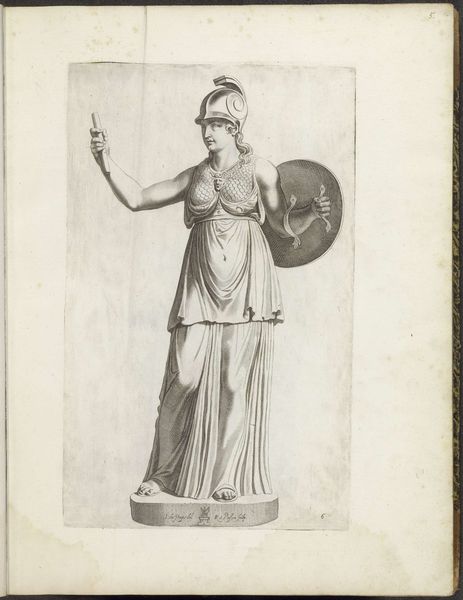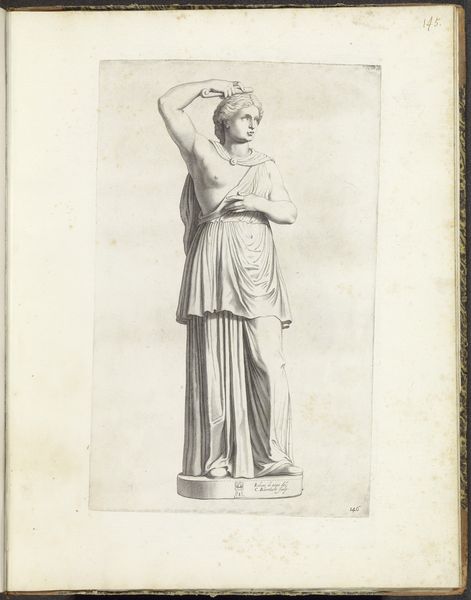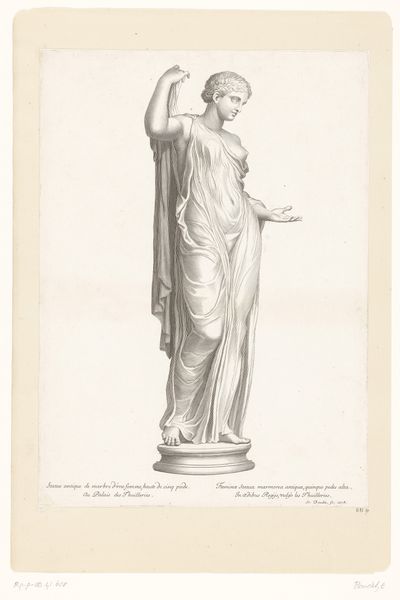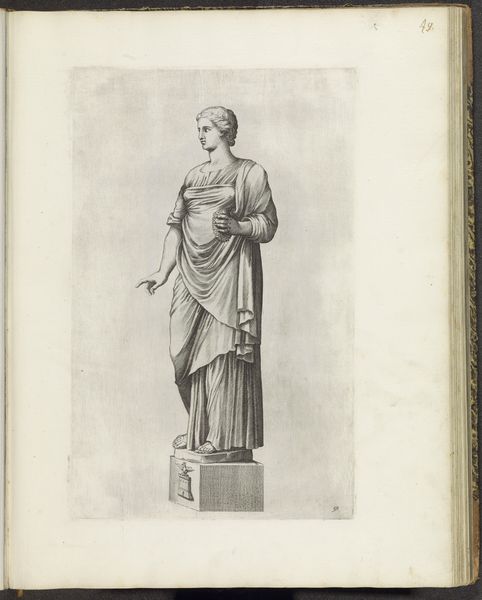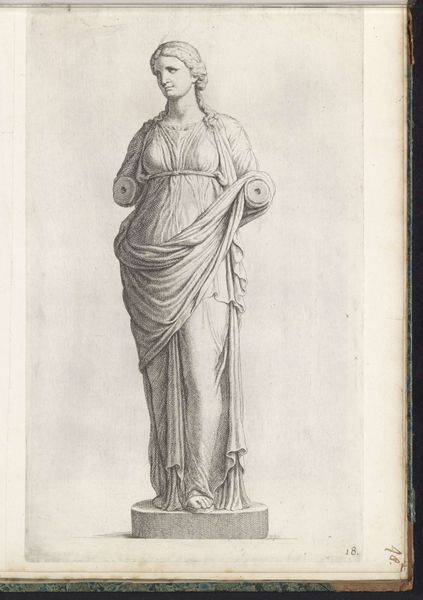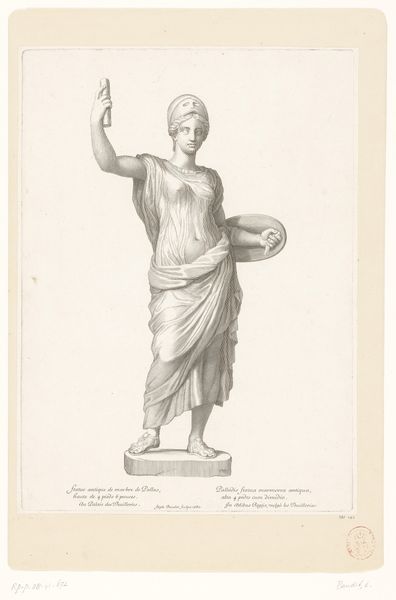
drawing, pencil
#
portrait
#
drawing
#
baroque
#
figuration
#
pencil drawing
#
pencil
#
watercolour illustration
#
academic-art
Dimensions: height 373 mm, width 230 mm
Copyright: Rijks Museum: Open Domain
Editor: Here we have Pieter de Bailliu's pencil drawing, "Statue of Minerva with a Helmet on her Head," created between 1636 and 1647. The delicate lines give the figure a very classical, almost serene presence, despite depicting a goddess of war. What stands out to you in terms of its formal qualities? Curator: I am drawn to the economy of line. Consider how Bailliu achieves volume and texture with such restrained mark-making. Observe, particularly, the drapery—how its weight and fall are suggested by subtle shifts in pressure and direction of the pencil. Editor: It’s amazing how he makes it look almost sculptural using only pencil. Is there significance in the medium itself? Curator: The choice of pencil, as opposed to ink, perhaps speaks to a different intention. Ink, with its permanence, might imply a finished, definitive statement. Pencil allows for a certain provisionality, a sense of ongoing refinement, aligning perhaps with the Academic Art style it has been classified under. What do you think of the interplay between light and shadow? Editor: The shading is very strategic. It creates depth, of course, but also highlights certain features – the folds of the dress, the curve of the helmet. The use of shadow also accentuates the figure’s smooth, idealized face, especially contrasting it against the rest of the rough strokes of the piece. It guides your eye to Minerva’s face and how the body drapes, focusing on the ideal human form depicted during that time. Curator: Precisely. Notice how the stark contrast defines and draws attention to those shapes, and thereby the artwork in itself, within this artistic setting. This careful manipulation of form to guide the viewer’s eye is at the heart of formalist analysis. Editor: That's a perspective I hadn't considered. Thinking about form and technique allows for an objective evaluation of the work itself. Thank you. Curator: My pleasure. Paying attention to form enables one to appreciate art with deeper comprehension.
Comments
No comments
Be the first to comment and join the conversation on the ultimate creative platform.
